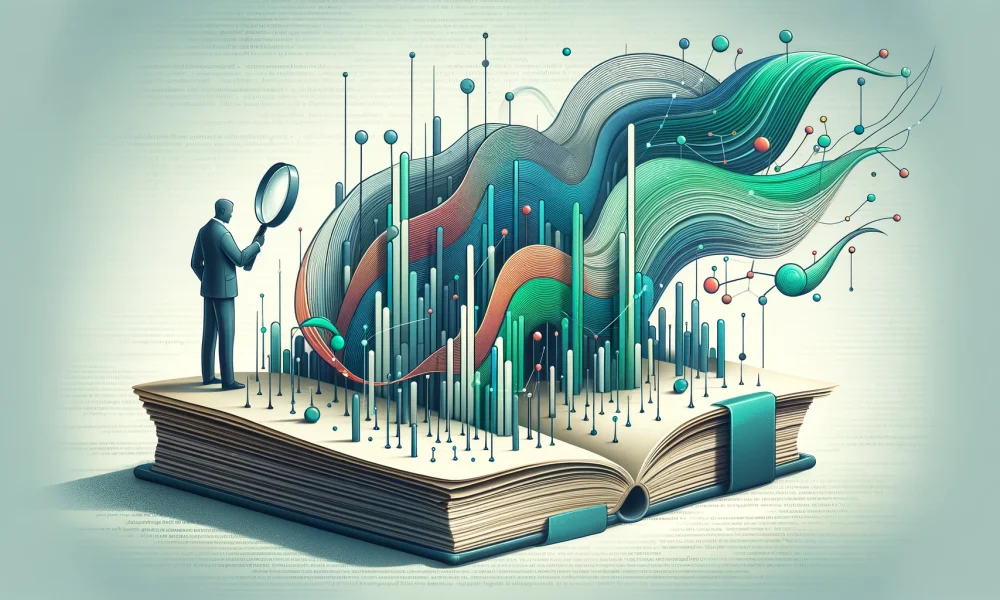Graph Neural Networks (GNN) – How They Work & Why They Matter

Introduction
Artificial Intelligence (AI) has advanced tremendously, with deep learning techniques dominating fields like computer vision, natural language processing (NLP), and recommenda-tion systems. However, many real-world problems involve complex, interconnected data structures that traditional deep learning models struggle to handle effectively. This is where Graph Neural Networks (GNNs) come into play.
GNNs are a powerful class of AI models specifically designed to work with graph-structured data. Unlike conventional neural networks that process data in Euclidean space (for ex-ample, images or text), GNNs can learn from relationships and dependencies between entities in non-Euclidean spaces, such as social networks, biological networks, and knowledge graphs.
Many professionals enrolling in a Data Scientist Course explore GNNs to understand how AI can analyse complex relationships beyond structured datasets.
This article explores what GNNs are, how they work, their applications, advantages, challenges, and future directions.
What Are Graph Neural Networks (GNNs)?
A Graph Neural Network (GNN) is a kind of deep learning model specifi-cally designed to process and analyse graph-structured data. A graph consists of:
- Nodes (Vertices) – Represent individual entities (for example, people in a social network, molecules in a chemical compound).
- Edges (Links) – Represent relationships between nodes (for example, friendships, chemical bonds).
GNNs learn patterns from these interconnected structures by leveraging node features and edge relationships, making them ideal for tasks requiring relational reasoning.
As AI professionals will learn in any data course, say, a Data Scientist Course in Pune, Mumbai, or Bangalore, GNNs are particularly useful for modelling data where connections and dependencies play a crucial role, such as in recommendation systems and fraud detection.
How Do GNNs Work?

GNNs operate through message passing, where information is propagat-ed between connected nodes to update their representations. This process typically involves:
- Node Feature Initialisation – Each node starts with an initial feature vector representing its attributes.
- Neighbourhood Aggregation (Message Pass-ing) – Each node gathers information from its neighbours and up-dates its own representation.
- Propagation Through Layers – The aggregation process continues through multiple layers, enabling each node to learn from distant connections.
- Graph-Level or Node-Level Prediction – The final embeddings can be used for several tasks such as node classification, link prediction, or graph classification.
The most common types of GNN architectures include:
- Graph Convolutional Networks (GCN) – Uses spectral-based convolution operations to aggregate neighbourhood in-formation.
- Graph Attention Networks (GAT) – Employs attention mechanisms to assign different weights to different neigh-bours.
- GraphSAGE – Samples a fixed number of neighbours for each node to make learning scalable.
GNN architectures, as taught in a Data Scientist Course, are essential for applications in fields such as bioinformatics, social media analysis, and supply chain optimisation.
Applications of GNNs
GNNs are widely used across multiple domains due to their ability to model relationships in complex data structures.
Social Network Analysis
Predicting friend recommendations (for example, Facebook, LinkedIn).
Detecting fake accounts and fraudulent activities.
Recommendation Systems
- Enhancing product recommendations on platforms like Amazon, Netflix, and Spotify.
- Learning user-item interactions to improve personalisation.
Drug Discovery and Bioinformatics
- Predicting protein-protein interactions and drug-target binding.
- Analysing molecular structures for drug design and disease prediction.
Knowledge Graphs & Search Engines
- Powering Google’s Knowledge Graph to enhance search results.
- Extracting relation-ships in natural language processing (NLP).
Fraud Detection in Finance
- Identifying suspicious transactions in banking networks.
- Detecting anomalies in credit card transactions.
Professionals in AI and data science learn about these real-world applications in a career-oriented data learning program such as a Data Scientist Course in Pune, where they work on projects involving graph analytics and network-based learning models.
Advantages of GNNs
GNNs offer several advantages over traditional deep learning models when dealing with relational data:
- Capturing Complex Relationships – GNNs effectively model interactions between connected entities, enabling deeper insights.
- Handling Non-Euclidean Data – Unlike CNNs or RNNs, GNNs can process data structures beyond grids or se-quences, such as graphs.
- Better Generalisation – By propagating information across nodes, GNNs improve feature learning and generalise well to new graphs.
- Reduced Feature Engineering – GNNs automatically learn graph structures, reducing the need for manual fea-ture engineering.
- Scalability – Advanced GNN architectures like GraphSAGE allow models to scale to large graphs by sampling neigh-bours.
Many aspiring AI professionals take a Data Scientist Course to gain expertise in designing scala-ble GNN models that can handle large datasets efficiently.
Challenges in GNNs
Despite their potential, GNNs come with certain challenges:
- Scalability Issues – Large graphs with billions of nodes (for example, social networks) pose computational challenges for GNN training.
- Over-Smoothing – As nodes aggregate information from neighbours across multiple layers, their representations may become indistinguishable.
- Dynamic Graphs – Many real-world graphs evolve over time (for example, social networks, financial transactions), making static GNNs less effective.
- Data Sparsity – Some graphs have sparse connections, limiting the effectiveness of message passing.
- Hyperparameter Sensitivity – The performance of GNNs depends heavily on hyperparameter tuning, such as neighbour-hood sampling size and learning rates.
These challenges are actively addressed in most data courses at advanced levels; for example, in the curriculum of a Data Scientist Course in Pune and such reputed learning centres, where students learn optimisation tech-niques and strategies to enhance GNN performance.
Future Directions in GNNs
The field of GNNs is evolving rapidly, with researchers exploring new ways to enhance efficiency, scalability, and adaptability. Some promising directions include:
- Graph Transformers – Incorporating attention mechanisms to improve information flow and reduce over-smoothing.
- Dynamic Graph Neural Networks (DGNNs) – Adapting models to changing graph structures over time.
- Self-Supervised Learning for GNNs – Reducing reliance on labelled data by leveraging unsupervised pretraining techniques.
- GNNs on Edge Devices – Optimising lightweight GNN models for mobile and IoT applications.
- Hybrid Models – Combining GNNs with reinforcement learning, NLP, and generative models for complex tasks like robotics and drug discovery.
Conclusion
Graph Neural Networks (GNNs) have gained traction as a powerful tool for analysing relational data, offering significant advantages over traditional deep learning models. By lev-eraging message passing and neighbourhood aggregation, GNNs enable AI systems to understand complex structures and dependencies, making them invaluable for applications in social networks, drug discovery, fraud detection, and recommendation systems.
While challenges like scalability and over-smoothing remain, ongoing re-search in graph transformers, dynamic GNNs, and self-supervised learning is pushing the boundaries of what GNNs can achieve. As AI continues to evolve, GNNs are poised to redefine how we process and ana-lyse interconnected data, making them a critical component of future AI innovations.
For professionals looking to master graph-based machine learning, enrol-ling in a Data Science Course can provide hands-on experience in building and deploying GNN models for real-world applications.
Business Name: ExcelR – Data Science, Data Analyst Course Training
Address: 1st Floor, East Court Phoenix Market City, F-02, Clover Park, Viman Nagar, Pune, Maharashtra 411014
Phone Number: 096997 53213
Email Id: enquiry@excelr.com






